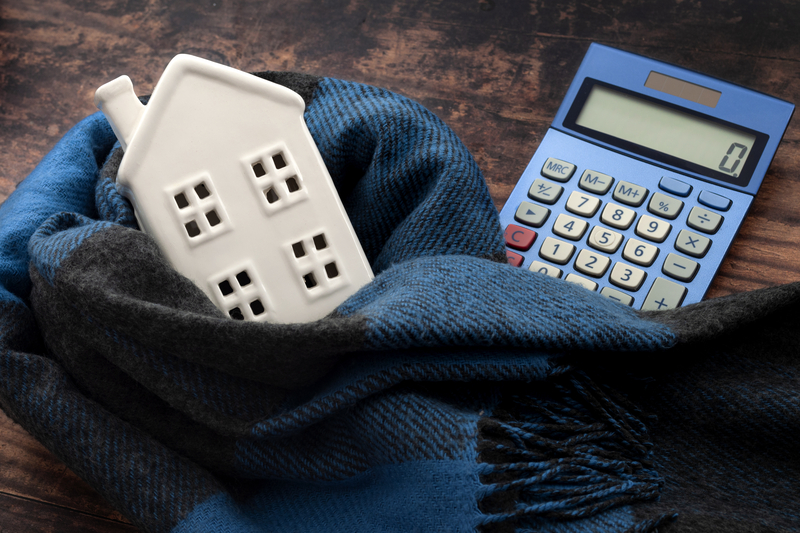No doubt, fall is a favorite season for many. Sweatshirts, fires and football—they are all sure signs that summer is fading away and cooler temperatures are driving in. But as the temps drop, we often find our heating costs increasing. There are ways to slash your heating costs, and below we highlight tips to keep more cash in your wallet.
Take away the drafts. According to the United States Department of Energy, the average household could see savings of up to thirty percent on their energy bills by decreasing the drafts in the home.
One way to do this is by covering drafty windows and doors, preventing the warm air from seeping cool air from creeping in. Replacing windows is often not an immediate option for many people but covering the windows with plastic can help.
Electric outlets are often unsuspecting culprits of drafts. Remove the outlet covers and insulate the outlet with socket sealer to prevent cool air from coming in. You can also use child safety plugs in outlets that are not in use to decrease drafts.
Use expanding foam to fill in any areas surrounding the pipes underneath your kitchen and bathroom sinks.
When not in use, use drain plugs to block cool air from coming up through your tub, shower and sinks.
Though you might want to keep your curtains open during the day to let in sunlight (and natural warmth), closing the blinds and curtains at night will help keep cool air at bay.
Move on to the ductwork. The Department of Energy also reports that you could be losing about twenty percent of your heat through your ductwork. While a professional should do the inspection and sealing, the annual savings will make it worth it. Having this done will also help protect your home, and family members, from dust and mold.
Insulate your attic, crawl space and basement. Though many people put this task off because the initial investment can be pricey, insulating your attic and basement walls can produce a significant savings to your heating bills.
Turn down your thermostat. The Department of Energy claims that turning your thermostat down by just one degree for an eight-hour period can cut your heating bill by one percent. This is something to consider when the kids are off to school, and you’re heading off to work each day. You can also do this at bedtime. Add an extra blanket or two to make up the difference in warmth.
Speaking of thermostat… go smart! A programmable thermostat will take the pressure off having to remember to adjust the thermostat when you not at home. Set your temperatures and times according to your schedule and go!
Install storm windows and storm doors. Your home’s energy efficiency can increase upwards of 45 percent with storm windows and doors.
Turn down the temperature on your water heater. Turning your water temp down from the normal 140 degrees to 120 degrees will still provide you with water that is plenty warm enough but will also provide you with a savings of six to ten percent on cost.
Keep track of when you run your appliances. Though this will vary by utility company, peak hours for usage means higher prices. Energy usage is often cheaper during the overnight hours. If you can hold off on turning on your thermostat (programmable, of course!) and your dishwasher, you just might find a significant savings in your bill.
Run your ceiling fans in reverse. Flip the switch on your fan to run clockwise. This will move the warm air in your home around without causing a cool breeze.
Whether you live paycheck to paycheck or you are simply looking to cut monthly heating expenses, being vigilant in your maintenance and completing these tasks will help you increase your heating efficiency while slashing your heating costs.

